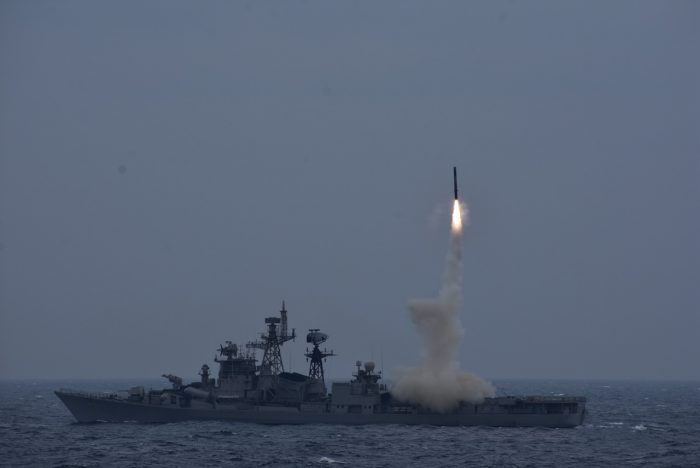As India is set to export the world’s fastest supersonic cruise missile, BrahMos, to the Philippines, experts are concerned if Manila can actually guard itself against Chinese threats in the South China Sea.
Ever since the reports of an agreement between Philippine defense undersecretary Raymund Elefante and Indian ambassador Shambu Kumaran, which laid the groundwork for Manila to procure the missile, most experts have said that the move will boost the Asian nation’s ability to defend its coastal areas.
The details of the procurement have not been revealed yet, but New Delhi had reportedly offered a soft loan of $100 million to Manila to acquire the missiles, in December. Experts believe if a formal deal is signed, the defense credit line may as well be extended, which will help the Philippines in the procurement.
An Indo-Russian joint venture, BrahMos, can be fired from ships, submarines, aircraft, and ground launchers. The initial versions of the missile go up to the range of 290km but last year India tested an extended range of around 400 kilometers, with more versions of higher ranges above 1,000 kilometers currently under development.
After the signing of the contract, the Philippines would be the first buyer of BrahMos, especially under Prime Minister Narendra Modi’s vision to expand defense exports. However, will the missile system be enough for the southeast Asian nation to counter China?
Experts believe the Philippines is both outclassed and outnumbered militarily by China when it comes to asserting its territorial rights in the South China Sea. Philippines President Rodrigo Duterte had accepted the same last year when he had said it was better for the Philippines to pursue “diplomatic endeavors” with China over the South China Sea dispute because “China has the arms” and Manila did not.
Defense Secretary Delfin Lorenzana had admitted that the Philippines was “not yet 25 percent” of the way to achieving minimum credible defense capability. Experts are slamming the decision because the country doesn’t have the required infrastructure to ensure that purchases are maintained and manpower is trained to maintain the systems.

It’s a sensible argument since the country has been trying to procure missiles for years. Even with BrahMos, experts point out that the country doesn’t have a budget to configure the ships to launch them.
The South China Sea Dispute
Bejing claims the entire South China Sea, stretching across 3.6 million square kilometers, as its territory. In 2016, the international arbitration ruling had invalidated most of Beijing’s rival claims in the South China Sea.
The Hague tribunal had backed the Philippines in a case on the disputed waters of the South China Sea. It had ruled that rocky outcrops claimed by China – some of which are exposed only at low tide – cannot be used as the basis of territorial claims. The tribunal’s ruling said:
“Some of the waters were within the exclusive economic zone of the Philippines because those areas are not overlapped by any possible entitlement of China”.
The tribunal had found China violating the Philippines’ sovereign rights in those waters by interfering with its fishing and petroleum exploration and by constructing artificial islands. However, China had refused to accept the ruling. Since then, the militarization and Chinese aggressiveness in the waters poses threat to the Philippines.
Follow EurAsian Times on Google